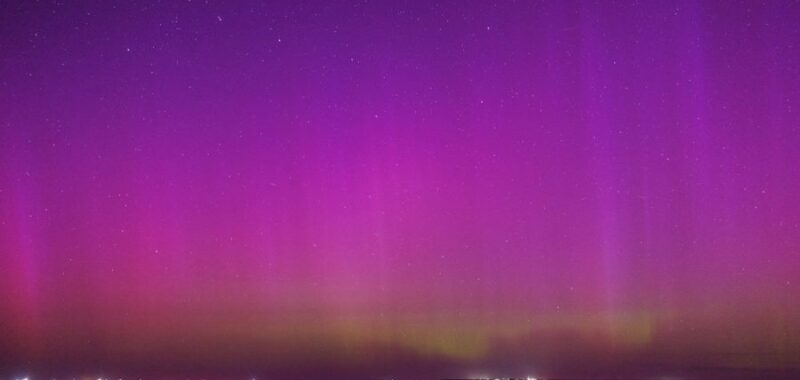
Federal forecasters are warning of a severe solar storm through Tuesday that potentially threatens satellites, orbital communications and some infrastructure.
The warning follows a volley of solar flares beginning over the weekend.
The outburst marks the second of its kind this year after decades of relative calm — part of a cycle of increasing storms that space scientists expect to continue through the end of 2025, if not beyond.
Though somewhat weaker than a similar event in May, this week’s storms reached the level of G4, or “severe” at 11 a.m. Eastern Time on Monday.
That followed Sunday night reports of the aurora borealis, or northern lights, as far south as North Texas or Mississippi, Mike Bettwy of the Space Weather Prediction Center told The Hill.
So far, it appears “the worst of the storm may be behind us,” Bettwy said, though that “doesn’t mean we can’t ramp back up.”
Based on current predictions, the aurora could become visible in Northern states — from Washington east across the Great Lakes to upstate New York and Maine — when the storm hits its maximum extent Monday night around 11 p.m. Eastern.
Solar storms begin as “ropes” of magnetic flux fling plasma from the sun’s surface into its atmosphere, as The Hill reported during the May storm.
Usually these ropes of charged plasma collapse back onto the surface of the sun — but sometimes they snap, slingshotting charged particles out into the solar system in what’s called a coronal mass ejection (CME).
As these charged particles move through the Earth’s magnetic field, they can create a geomagnetic storm, in which electromagnetic disturbances propagate across the sky and surface of a planet “encircled with bands of metal — transmission lines, railroad tracks or even pipelines,” as The Hill reported.
“Depending on how much [the CME] interacts with the Earth’s magnetic field, the Earth’s field can fluctuate,” Robert Steenburgh, a space scientist at the National Oceanographic and Atmospheric Administration (NOAA), told reporters in May.
That flux can send pulses of electric current down “long conductors like pipelines, railroad tracks and power lines that’s not supposed to be there,” he added.
The May solar storm disrupted the activity of precision-guided tractors, stalling work in the middle of corn and soybean planting.
“I’ve never dealt with anything like this,” one Minnesota soybean planter told The New York Times at the time.
That storm otherwise had minimal effect. But outbursts of a similar kind have the potential to be catastrophic if they reach a certain magnitude. In 2012, a solar flare far larger than either the May storm or the one now in progress — described by NASA as “big enough to knock modern civilization back to the 18th century” — barely missed the Earth, spurring the Obama administration to work to harden terrestrial infrastructure.
Both this year’s storms are part of the same broad pattern of increasing sunspot activity. CMEs often form around sunspots, although scientists aren’t entirely sure why.
Sunspot formation is cyclical, and the current solar cycle has reached the highest number of sunspots since 2001, NOAA announced on Friday.
With the current period of high activity, scientists predict “at least a few more G4 events between now and 2025,” Bettwy said.
But the elevated risk of solar storms could last into 2026, because some evidence suggests CMEs may become more common on the back side of the peak in solar activity. For example, the 2003 Halloween storms, which battered global positioning systems and ground-based electric infrastructure with the most intense solar storms in 78 years, came well after the peak in 2002.

